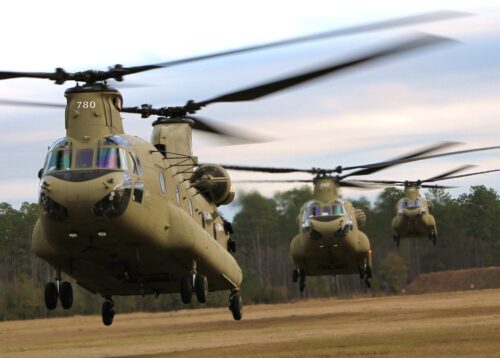In a comprehensive analysis of U.S. Army aviation from 2000 to 2023, the Congressional Budget Office (CBO) has revealed significant trends in fleet size, availability, and utilization. The report, released in Sept. 2024, offers insights into the Army’s ongoing efforts to modernize its aviation assets while maintaining operational readiness.

Despite an overall decline in fleet size since 2000, the Army’s aircraft availability has shown a marked improvement, bucking the trend observed in other military branches. As of 2023, the Army maintained approximately 3,900 manned aircraft, primarily helicopters, with an additional 700 large unmanned aerial systems (UAS).
The H-60 Black Hawk, the Army’s largest fleet, has seen consistent growth in numbers and availability since 2005. In 2023, the Army achieved an impressive 68% availability rate across its manned aircraft fleet, a significant increase from earlier years.
The report highlights the Army’s unique approach to aircraft upgrades, particularly for rotary-wing assets. Unlike fixed-wing aircraft, helicopters receive new tail numbers upon major upgrades, effectively resetting their age to zero. This practice reflects the fundamental differences in wear patterns between helicopters and fixed-wing aircraft, allowing for more accurate service life tracking.
Usage patterns revealed in the CBO report demonstrate the impact of recent conflicts on Army aviation. Total flying hours for manned aircraft peaked in 2008 at 1.22 million hours, with average flying hours per aircraft reaching their zenith in 2011 at 302 hours. By 2023, these figures had moderated to 0.77 million total hours and 198 average hours per aircraft, respectively.
The CBO’s analysis also shed light on the relationship between aircraft age and availability. Interestingly, both the H-60 Black Hawk and H-47 Chinook fleets showed improved availability rates for older aircraft, with 36-year-old Black Hawks maintaining an average 65% availability rate.
The report touched on the impact of the COVID-19 pandemic, noting a temporary spike in availability rates coupled with a sharp decline in flying hours during the early months of 2020. However, both metrics had largely normalized by early fiscal year 2021.
As the Army continues to balance modernization with operational demands, this CBO report provides valuable insights into the health and utilization of its aviation assets, crucial for future planning and resource allocation in the evolving landscape of military aviation.
For more information, hit the Source below